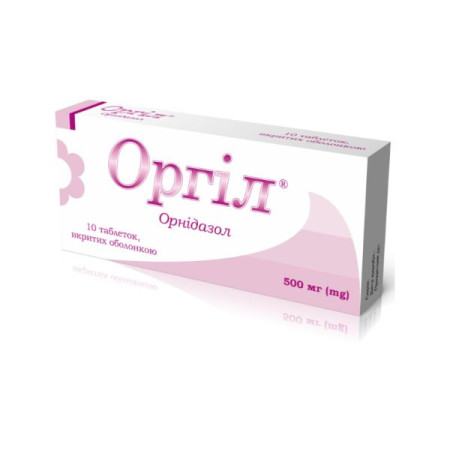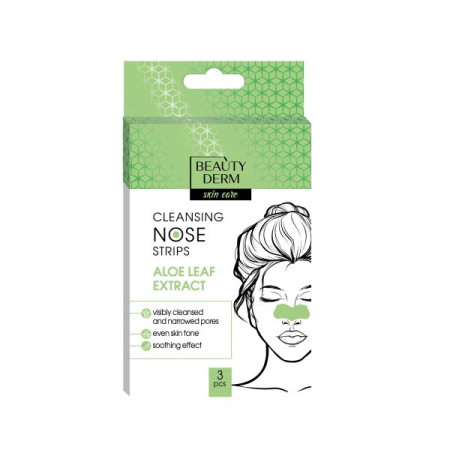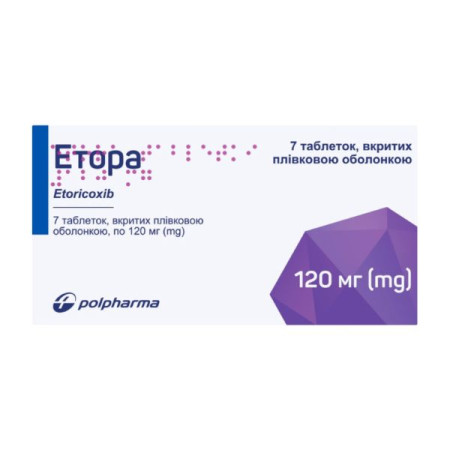Clodifen gel 50 mg/g tube 45 g

Instructions Clodifen gel 50 mg/g tube 45 g
Composition
active ingredient: diclofenac;
1 g of gel contains diclofenac sodium 50 mg;
Excipients: hydroxyethylcellulose, propylene glycol, ethanol 96%, methyl parahydroxybenzoate (E 218), purified water.
Dosage form
Gel.
Main physicochemical properties: transparent, colorless to slightly yellowish gel, homogeneous, free of bubbles, with a faint odor of alcohol.
Pharmacotherapeutic group
Topical agents for joint and muscle pain. Nonsteroidal anti-inflammatory drugs for topical use. Diclofenac. ATC code M02A A15.
Pharmacological properties
Pharmacodynamics
Diclofenac is a nonsteroidal anti-inflammatory drug (NSAID) with pronounced antirheumatic, analgesic, anti-inflammatory and antipyretic effects. The main mechanism of action is the inhibition of prostaglandin biosynthesis.
In case of inflammation caused by injuries or rheumatic diseases, the drug reduces pain, tissue swelling and shortens the period of restoration of functions of damaged joints, ligaments, tendons and muscles. Acute pain decreases within 1 hour after the initial application of the drug. The vast majority of patients had a response after 2 days of treatment. Overcoming pain and functional disorders was achieved after 4 days of treatment with the drug. Due to the water-alcohol base, the drug also exhibits a local anesthetic and cooling effect.
Pharmacokinetics
The amount of diclofenac absorbed through the skin is proportional to the area of application and depends on both the total dose of the drug applied and the degree of skin hydration. After topical application of 2.5 g of diclofenac to a skin surface area of 500 cm2, the degree of absorption is approximately 6%. The use of an occlusive dressing for 10 hours leads to a threefold increase in diclofenac absorption.
After application of diclofenac to the skin of the hand and knee joints, diclofenac is found in the blood plasma (where its maximum concentration is approximately 100 times lower than after oral administration), in the synovial membrane and synovial fluid. The protein binding of diclofenac is 99.7%.
Diclofenac accumulates in the skin, which serves as a reservoir from which the substance is gradually released into the surrounding tissues. From there, diclofenac mainly enters deeper inflamed tissues, such as joints, where it continues to act and is detected in concentrations up to 20 times higher than in blood plasma.
Diclofenac is metabolized mainly by hydroxylation to form several phenolic derivatives, 2 of which are pharmacologically active, but much less so than diclofenac.
Diclofenac and its metabolites are excreted mainly in the urine. The total systemic plasma clearance of diclofenac is 263±56 ml/min and the terminal half-life is on average 1–3 hours.
In renal or hepatic insufficiency, the metabolism and excretion of diclofenac are not altered.
Indication
Local treatment of pain and inflammation of joints, muscles, ligaments and tendons of rheumatic or traumatic origin.
Contraindication
Hypersensitivity to diclofenac, other NSAIDs or to other components of the drug. History of attacks of bronchial asthma, urticaria, acute rhinitis, nasal polyps or angioedema caused by taking acetylsalicylic acid or other NSAIDs. Last trimester of pregnancy.
Interaction with other medicinal products and other types of interactions
Since the systemic absorption of diclofenac following topical application is very low, the likelihood of interactions is very low.
Application features
The drug should be used with caution simultaneously with oral NSAIDs due to the possible increase in undesirable effects, in particular systemic side effects. The drug should not be used simultaneously with other drugs containing diclofenac.
The likelihood of developing systemic side effects with topical application of diclofenac is insignificant compared to the use of its oral forms, but it cannot be ruled out when the drug is used on relatively large areas of skin for a long time.
If any skin rashes appear, the use of the drug should be discontinued.
The drug is recommended to be applied only to intact skin areas, avoiding contact with inflamed, injured or infected skin, as well as skin areas affected by eczema. Avoid contact with eyes and mucous membranes. Do not swallow the drug.
The drug should not be used under an airtight occlusive dressing, but it can be used under a non-occlusive dressing. In case of ligament sprain, the affected area can be bandaged.
In isolated cases, gastrointestinal bleeding has been reported in patients with a long history of the disease.
The product contains propylene glycol, which may cause skin irritation, and methyl parahydroxybenzoate (E 218), which may cause allergic reactions (possibly delayed).
Ability to influence reaction speed when driving vehicles or other mechanisms
Does not affect.
Use during pregnancy or breastfeeding
Clinical experience in pregnant women is limited, therefore the use of the drug during pregnancy is not recommended. The drug is contraindicated during the third trimester of pregnancy due to the possibility of developing weakness of labor, impaired fetal renal function with subsequent oligohydramnios and/or premature closure of the ductus arteriosus.
In animal studies, no harmful effects of diclofenac on pregnancy or embryonic development, childbirth or postnatal development of the child were detected.
It is not known whether topical diclofenac is excreted in breast milk, so its use is not recommended during breastfeeding. However, if there are compelling reasons for its use during breastfeeding, the drug should not be applied to the mammary glands or large areas of skin and should not be used for prolonged periods.
There are no data on the effect of diclofenac on human fertility when applied topically.
Method of administration and doses
Adults
The drug is intended for external use.
The gel should be applied to the affected area of the skin 3–4 times a day, rubbing lightly into the skin. The amount of the drug used depends on the size of the affected area (2–4 g, which is the size of a cherry or walnut, is enough to cover an area of 400–800 cm2).
After applying the drug, hands should be washed, except when this is the area to be treated.
The duration of therapy depends on the nature of the disease and the effectiveness of the treatment. The drug should not be used for more than 14 consecutive days. If the symptoms of the disease do not decrease or worsen after 7 days of treatment, you should consult a doctor.
Elderly patients
Such patients do not require dose adjustment.
Patients with renal insufficiency
There is no reason to believe that patients with renal insufficiency require special dose adjustment.
Patients with hepatic insufficiency
There is no reason to believe that patients with hepatic insufficiency require special dose adjustment.
Children
There are no dosage recommendations and therapeutic indications for use in children under 18 years of age.
Overdose
Overdose is unlikely due to the low absorption of diclofenac into the systemic bloodstream when applied topically. In case of accidental ingestion, it should be borne in mind that 1 tube of the drug of 45 g contains the equivalent of 2.25 g of diclofenac sodium; the development of systemic adverse reactions is possible.
In case of accidental ingestion, the stomach should be emptied immediately and an adsorbent should be taken. Symptomatic treatment is indicated using therapeutic measures used for the treatment of NSAID poisoning.
Adverse reactions
The drug is usually well tolerated. Adverse reactions include mild, transient skin reactions at the application site. In rare cases, allergic reactions may occur.
Adverse reactions are classified according to frequency: very common (>1/10); common (≥1/100, <1/10); uncommon (≥1/1000, <1/100); rare (≥1/10000, <1/1000); very rare (<1/10000); frequency unknown (frequency cannot be estimated from the available data).
Infections and infestations:
very rarely - pustular rashes.
On the part of the immune system:
very rarely - hypersensitivity reactions (including urticaria), angioedema, shortness of breath.
From the respiratory system, chest organs and mediastinum:
very rarely - bronchial asthma.
Skin and subcutaneous tissue disorders:
often - rash, redness, eczema, exanthema, erythema, dermatitis (including contact dermatitis), itching, burning, the appearance of edema and vesicles, papules, pustules, peeling and dry skin; rarely - bullous dermatitis; very rarely - photosensitivity reactions, burning sensation of the skin, generalized skin rashes.
Adverse reactions from the digestive tract occur very rarely after topical application of preparations containing diclofenac.
When using the drug in high doses or applying it to large areas of the skin, the possibility of systemic adverse reactions, as well as hypersensitivity reactions in the form of angioedema and dyspnea, cannot be ruled out.
Reporting of suspected adverse reactions
Reporting suspected adverse reactions that occur after the marketing authorisation of a medicinal product is extremely important. This allows for continuous monitoring of the benefit/risk balance of the medicinal product. Healthcare professionals are asked to report any suspected adverse reactions via the national reporting system.
Expiration date
3 years.
Storage conditions
Store at a temperature not exceeding 25 °C out of the reach of children.
Packaging
Gel 45 g in aluminum tubes. 1 tube in a cardboard box.
Vacation category
Without a prescription.
Producer
K.O. SLAVIA FARM S.R.L.
Location of the manufacturer and its business address
Teodor Palladi Boulevard No. 44 C, Sector 3, 032266, Bucharest, Romania.
There are no reviews for this product.
There are no reviews for this product, be the first to leave your review.
No questions about this product, be the first and ask your question.













